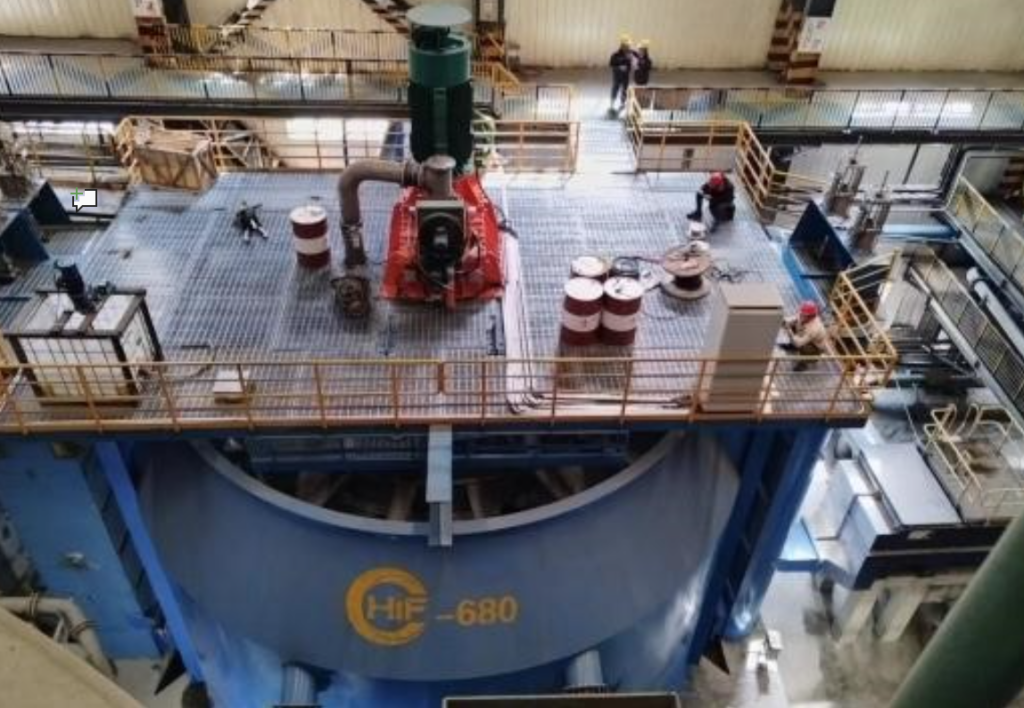Mining activities lead to substantial quantities of tailings and slags containing metallic trace elements, leaving persistent pollutants in the environment and are toxic even in low concentrations. Non-ferrous metals, ferrous metals and rare precious metals are mostly recovered by flotation, and the tailings are generally directly discharged to the tailings ponds for storage or backfilled.
At the same time, with increasing demand for minerals, reprocessing of tailings is becoming significant and in fact essential to improve the comprehensive utilisation of mineral resources. China’s mineral processing major BGRIMM-Mat told IM that it has been devoted to improving the recovery of minerals from mine tailings for several years now by using critical technology innovation and in particular utilisation of flotation cells.
Specifically, a new generation forced-air flotation cell (HIF®), with five kinetic zone structures, has been developed by BGRIMM-Mat. “Since the rotor locates in the middle zone of the tank, the upwards transportation distance of the bubble-particle aggregate is decreased significantly in the cell. Thus, coarse particles and poorly liberated mineral particles disaattachment probability is decreased, and the mineral recovery rate is improved.”
According to the research conducted by BGRIMM, the loss of minerals in taillings is mainly as ultrafine, coarse and poorly liberated mineral particles. Meanwhile, the mineral grade in tailings is very low and difficult to recover. Complex flotation circuits and a larger number of conventional flotation cells will lead to high capital investment and operation cost.
The solution is proposed by BGRIMM-Mat is that a large size and tailored flotation cell can be used as an individual reprocessing bank following the conventional flotation banks to recover minerals from tailings. For reprocessing tailings, the froth is very thin and does not overflow the launder efficiently due to the low mass pull of the concentrate, hence the shape of tank and froth launder (BGRIMM Spider Froth Launder) is also designed specially to enhance the movement of froth.
The tailing of conventional flotation is directly discharged into the last large flotation cell for re-processing. The coarse and poorly-liberated mineral particles can be recovered in the froth. The froth is then classified by hydrocyclone, and the fine mineral particles are returned to conventional flotation, while the coarse mineral particles are send to the regrinding circuit to achieve better liberation and hence better recovery. Such an economical solution to recover minerals from tailings BGRIMM-Mat says is applicable for most flotation plants.
A HIF-130 flotation cell has been installed in Wushan Copper Mine (capacity o5,000 t/d) in China to recover copper from flotation tailings, and the overall copper recovery has been increased by 1.03%. The flotation recovery of the HIF-130 flotation cell is above 20% and enrichment ratio is above 10%.
Two HIF-320 flotation cells have also been used in two parallel lines at Zijin’s Duobaoshan Copper Mine (capacity 50,000 t/d, two lines) in China to recover copper from flotation tailings, and the overall copper recovery has been increased by 1%.
The first HIF-500 flotation cell has been used at Serbia Zijin Copper’s Majdanpek (MS) Copper Mine (capacity 20,000 t/d) in Serbia to recover copper from flotation tailings, and the overall copper recovery has been increased by 1-3%.
Finally, a HIF-680 flotation cell has been applied in a flotation line in Pulang Copper Mine (capacity of 40,000 t/d, two lines) in China to recover copper from flotation tailings, and the overall recovery was increased by about 1.5%.











